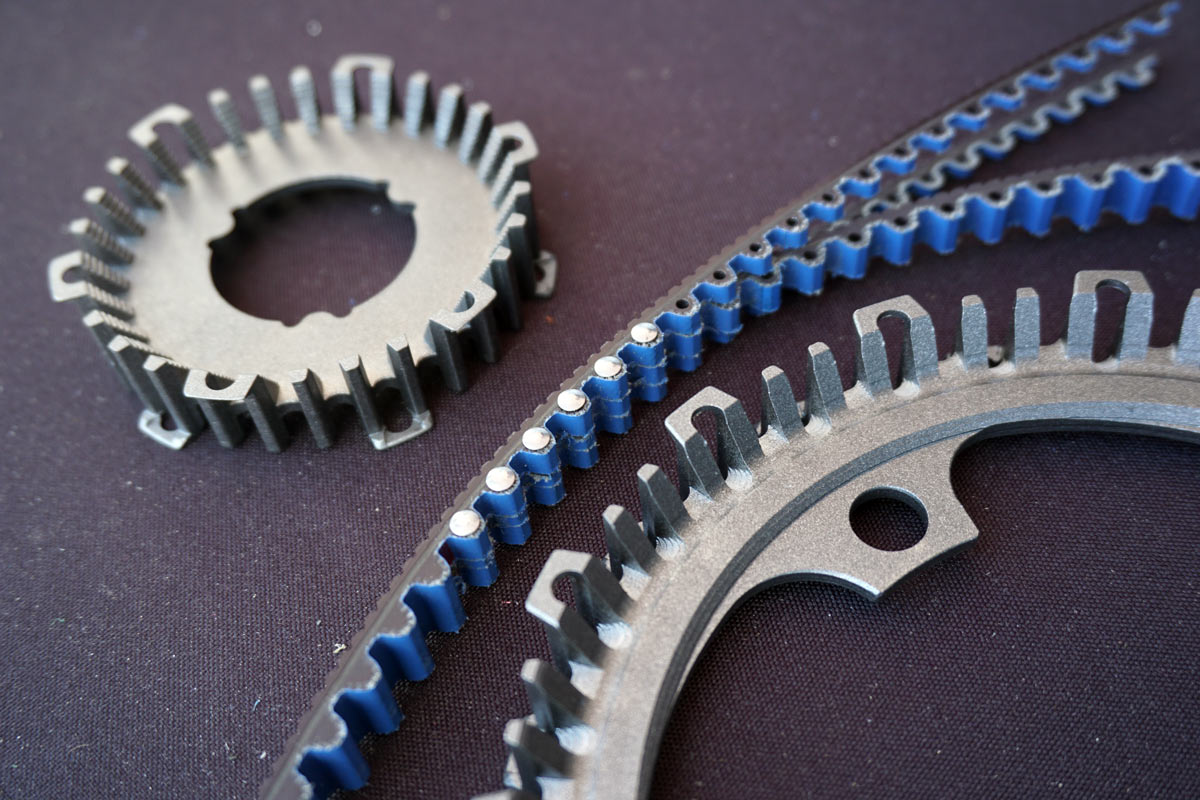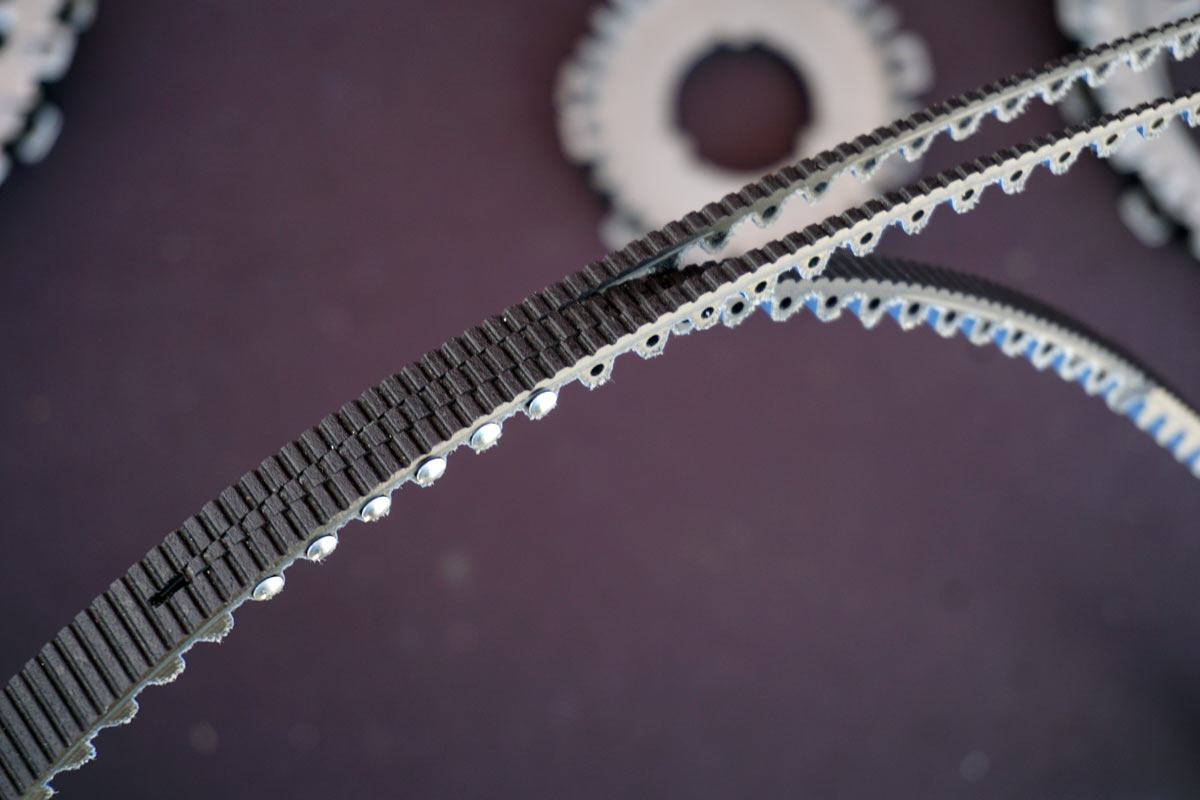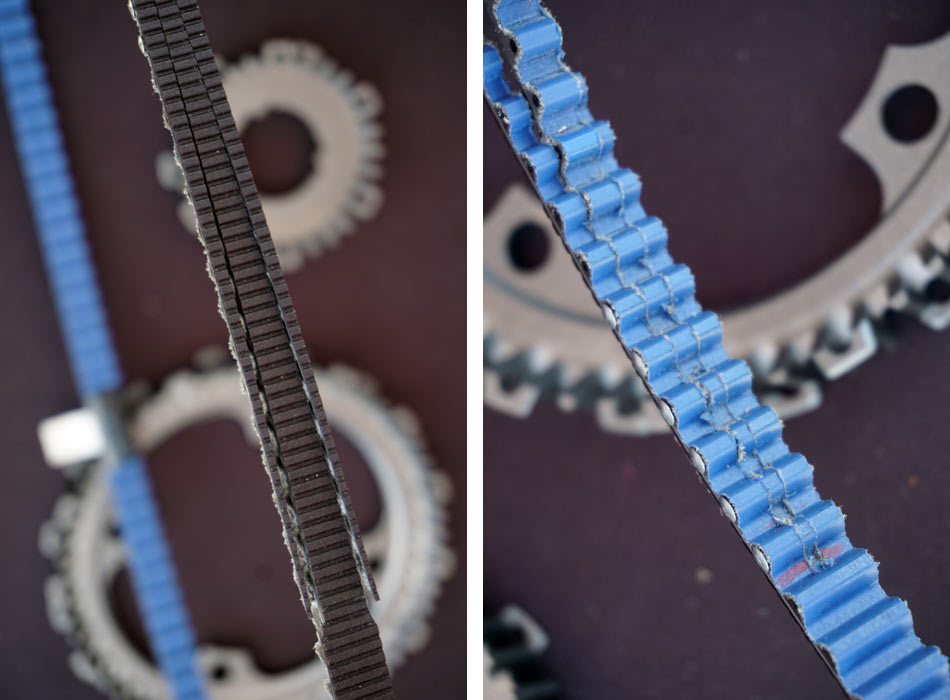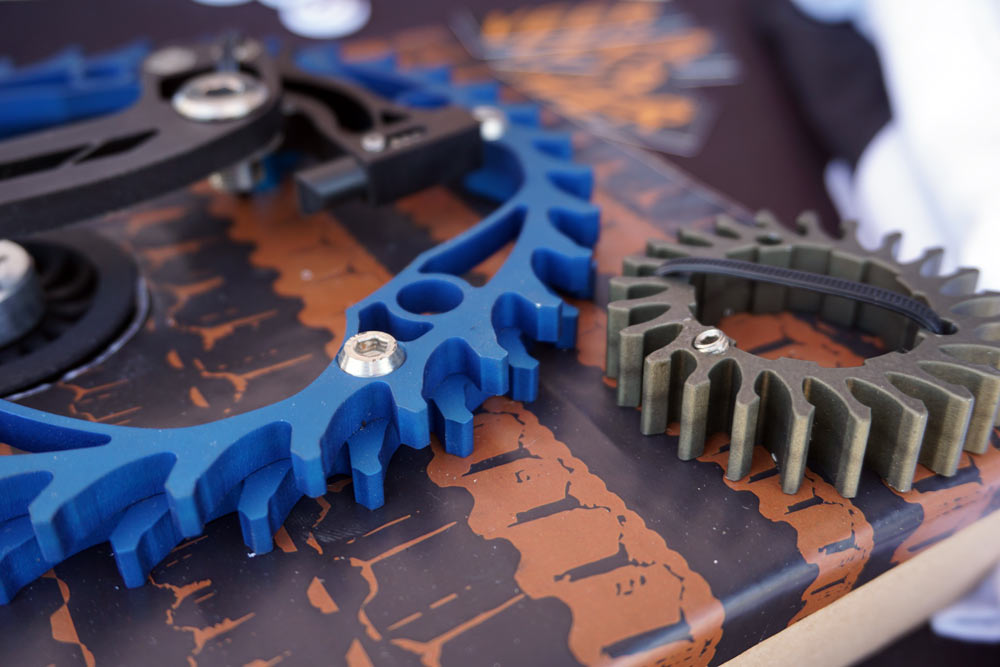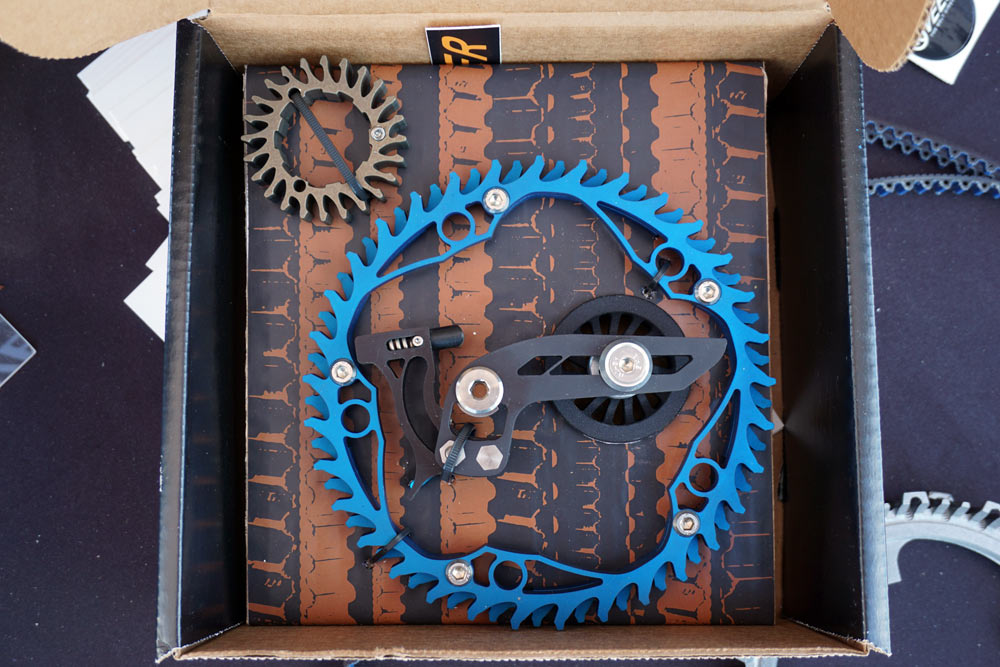The one major constraint to using a belt drive on a bicycle is that the frame needs a break somewhere on the driveside rear triangle to allow the belt to insert. Now, Veer Cycle has found a way to let you put a belt drive transmission on any bike, by cutting the belt.
They use the proven Gates Industrial Belts, so same brand as what you’ll find directly from Gates Belt Drive bicycle systems, but a different model that allows them to slice and reassemble it.
Veer cuts a long “V” into the belt…
…then uses stainless steel rivets to reattach them. Besides being able to set it up on any frame, this also lets them cut it to custom lengths to fit any bike. They have an online guide to finding the right length to order.
Shown here is the Single Speed version that works on standard freehub bodies for, you guessed it, single speed bikes. It’s a 66-tooth big ring (44-tooth chainring equivalent) paired with a 24-tooth sprocket (15-tooth cog equivalent) for a 2.45:1 ratio. They’re machined from 7075 alloy with titanium hardware and work with a standard 5-bolt 130BCD crankset.
The kit retails for $349 and includes the sprocket, gear (comes in blue or black) and tensioner. They’re working on a Pro version that’ll have more gear ratio options, lighter weight, and possibly be able to work with internally geared hubs. Look for that to run about $400.
